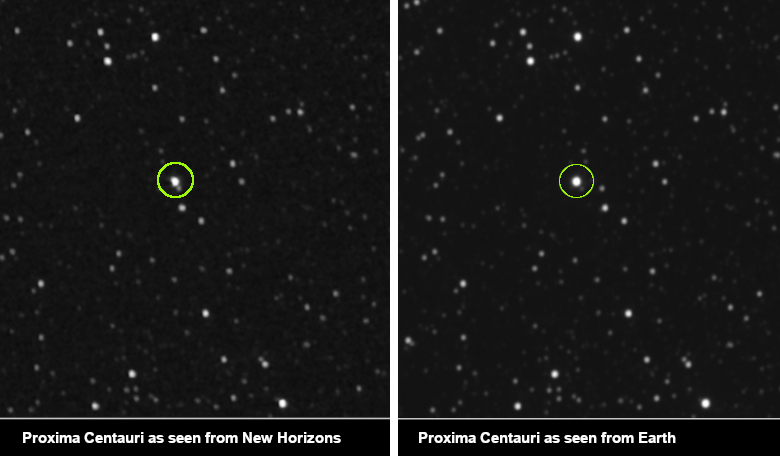NASA’s New Horizon spacecraft, which flew by Pluto nearly five years ago is now so far from Earth, that it can see the position of nearby stars shift significantly when compared to the view from home.
Since its launch in January 2006, NASA’s New Horizon spacecraft has been racking up a number of firsts as it wings its way through the Solar System.
It was the first probe to observe Pluto up close, giving scientists back on Earth an unprecedented view of this enigmatic dwarf planet with an icy heart.
It was also the first mission to explore the Kuiper Belt – the region beyond the giant planets also referred to as the “third zone” – when it got three times closer to Arrokoth (Powhatan/Algonquian for "sky”) than it did to Pluto on 1 January, 2019.
Now, from its unique vantage point over seven billion kilometers (about four billion miles) from Earth, the distant probe has now notched up another new first; the first interstellar parallax experiment.
The first known astronomical measurement using parallax is thought to have occurred in 189 B.C., by Greek astronomer, Hipparchus and the “parallax effect” refers to how a star appears to shift against its background when seen from different locations.
Hipparchus used observations of a solar eclipse from two different locations to measure the distance to the Moon. With the aid of its long-range telescopic camera, New Horizons has just used the same method on a pair of the “closest” stars, Proxima Centauri and Wolf 359, to show just how they appear in different places than we see from Earth.
“It’s fair to say that New Horizons is looking at an alien sky, unlike what we see from Earth,” said Alan Stern, New Horizons principal investigator from Southwest Research Institute (SwRI) in Boulder, Colorado. “And that has allowed us to do something that had never been accomplished before — to see the nearest stars visibly displaced on the sky from the positions we see them on Earth.”
An easy way to see the parallax effect is to hold out your hand, close your right eye, and place your extended thumb over a distant object. Now switch eyes - close your left eye and open your right. You will see that your thumb will appear to shift slightly against the background.
By measuring this small change and knowing the distance between your eyes, you can calculate the distance to your thumb.
Parallax is therefore considered a “gold standard” for measuring stellar distances because it relies solely on geometry and does not require physics for the calculation.
The trouble is that on Earth because even the nearest stars are so far away, parallax shifts are tiny, and can only be measured with precise instrumentation.
“No human eye can detect these shifts,” Stern said.
But when New Horizons images are paired with pictures of the same stars taken on the same dates by telescopes on Earth, the parallax shift is instantly visible.
As seen from New Horizons, Proxima Centauri shifts by 32 arcseconds from where we see it on Earth, Tod Lauer, New Horizons science team member who coordinated the parallax demonstration, said via Twitter.
For Wolf 359, the parallax from New Horizon is 16 arcseconds added Lauer, who is based at the National Science Foundation's National Optical-Infrared Astronomy Research Laboratory. “Combine its parallax with that of Proxima and you can locate New Horizon’s position in space. We have never before done interstellar navigation based on how the stars shift,” Lauer says.
Working with Lauer to create the images was New Horizons Deputy Project Scientist John Spencer, of SwRI, and stereo imaging enthusiast and Queen guitarist Brian May, who was studying astrophysics before the band found global success back in the 70s.
“It could be argued that in astro-stereoscopy – 3D images of astronomical objects – NASA’s New Horizons team already leads the field, having delivered astounding stereoscopic images of both Pluto and the remote Kuiper Belt object Arrokoth,” May said.
“But the latest New Horizons stereoscopic experiment breaks all records. These photographs of Proxima Centauri and Wolf 359 – stars that are well-known to amateur astronomers and science fiction aficionados alike – employ the largest distance between viewpoints ever achieved in 180 years of stereoscopy!”
If you've enjoyed reading this article, please consider subscribing to ROOM Space Journal to gain immediate and full access to the latest magazine feature articles and receive your own print and/or digital copies of the quarterly ROOM magazine delivered electronically or direct to your door.











